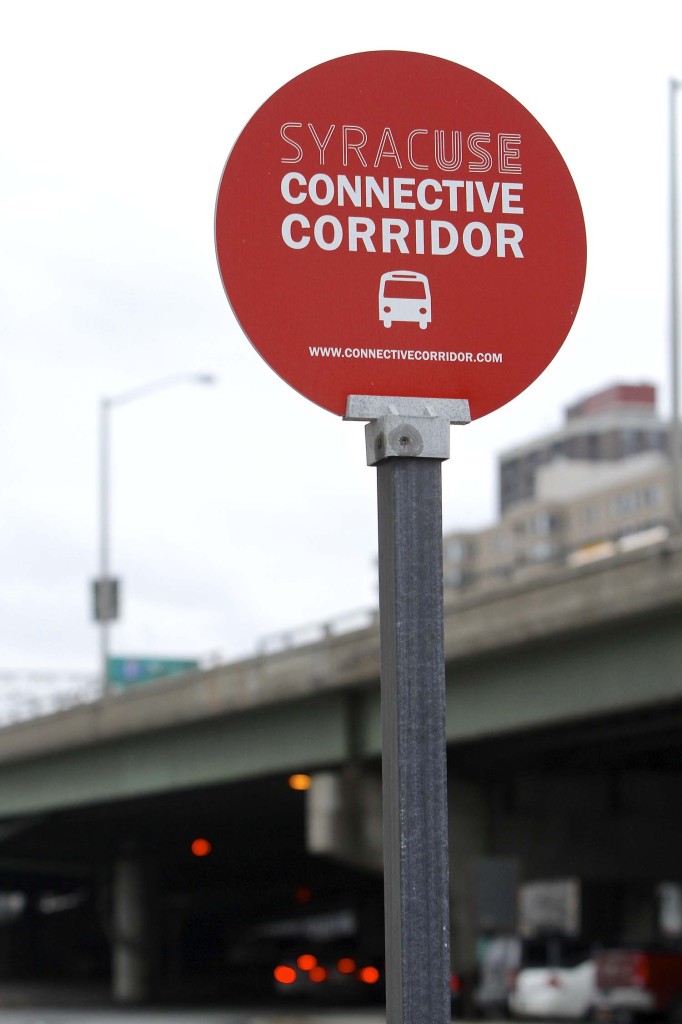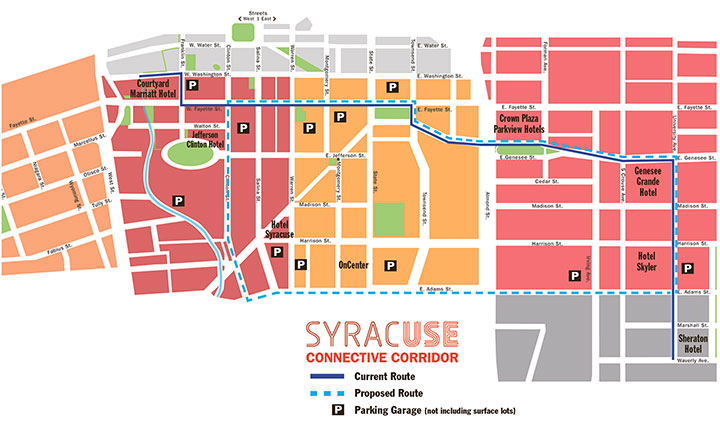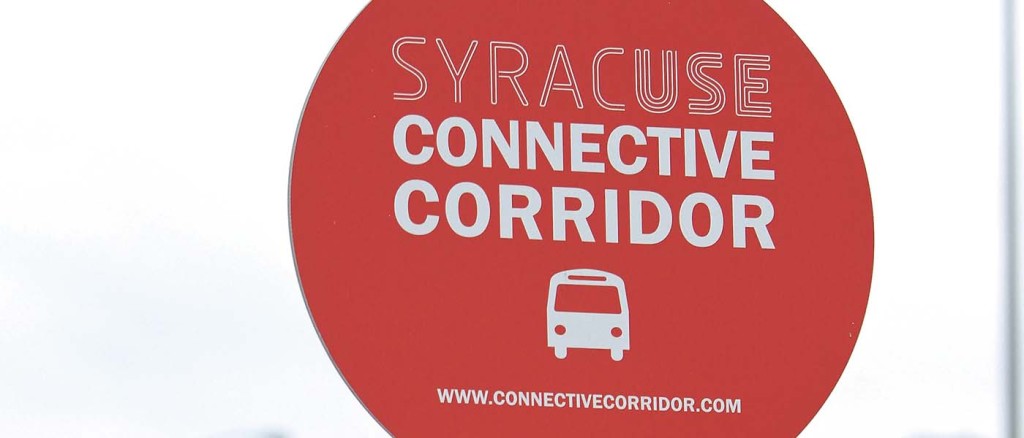Whether you approve or disapprove of former Chancellor Nancy Cantor’s tenure here in Syracuse, in my opinion, one of her standout achievements was a vision to integrate Syracuse University into the city of Syracuse for the mutual benefit of both organizations.The city needs the Connective Corridor to stimulate economic activity and tap into the tremendous market the university students and faculty represent. And the university needs the Connective Corridor to facilitate expansion to remote learning facilities and to support their efforts to give students real world experiences in the city with worthy civic engagement and diversity activities such as the Near West Side Initiative.
Undoubtedly, the city of Ann Arbor and the University of Michigan provided a framework for Cantor’s ideas. If you have had the chance to visit there, it’s hard to see where the University of Michigan stops and the city starts. They exist together in a symbiotic relationship, and help each other to make the area more livable in an economically distressed region. This concept is not unique among college towns, and there are many more examples of similarly productive relationships around the country.
Cantor was relentless in pursuing this vision, and provided leadership right up until her recent departure. She has left the effort in very capable hands. I can only hope the new chancellor has a similar view of the need for the university and the city to collaborate on the same or even greater scale.

I realize the Connective Corridor was conceived to be more than a bus route, but a key element to facilitate this integration is a transportation system that is reliable, predictable and desirable. It must be effective in truly uniting the two entities and meeting the needs of all involved. The Connective Corridor, in its current state, has developed into a one-sided, self-serving entity, meeting the university’s needs to get students to remote learning locations, and to support their off-campus activities like the Near West Side Initiative. It has not provided an economic development tool for the city, and has missed the mark in helping to fully break down the barriers between the university and the city.
We should not be surprised to see how this project developed: The leadership for the Connective Corridor has come from the university, the funding has essentially come from the university, and the day-to-day management and promotion has come from the university. One needs only to look at the core bus route on the Connective Corridor map to confirm this. It is an L-shaped route from the SU Hill to the SU Warehouse in Armory Square, with some other routes growing off the core route. The list of stops total about 75. Statistics have been reported that the Connective Corridor has transported upward of 190,000 riders in 2013, an impressive number! My guess is they are mostly students traveling between the main campus and the remote learning locations. Yet I have not yet been able to find a merchant in the downtown area that feels the Connective Corridor has been helpful in growing their business.
We are so close. There is unprecedented cooperation between the city, county and the university. There is clearly a need for economic development in the city, and there is a change of leadership happening at the university. Let’s take what has been done well, agree on what has been learned, and finish the job NOW.

Here’s an idea to begin those discussions:
Redevelop the route using what currently exisits from an “L” to a rectangle that encompasses the majority of the downtown area (see map above). This rectangular route should reach the university area, the Genesee Street district, the downtown district, Armory Square, and the hospitals. This will unite the shopping, parking, dining, medical, hotel, and convention resources with the university, and make most downtown locations within a three-block walk of this route. Build 12 to 15 weather-enclosed stations for riders to catch the transportation, and use GPS bulletin boards to let riders know when the next bus is arriving. Plan a schedule that meets the neeeds of students, merchants and residents to be available when needed, and be able to travel the entire route in no more than 20 minutes.
Calls to Action:
City of Syracuse: It’s time to come to the table with leadership and financial resources to supprt the downtown merchants with an effective, free transportation system. Wouldn’t it be great if a well-designed downtown transportation system paid for itself with increased sales, hotel and parking taxes!
CenterState CEO: Write this project into the next round of economic development grants to get the resources to build 12 to 15 state-of-the-art waystations with GPS technology to improve perception, increase reliability, and provide safe and rapid access to all points on the route. Provide prize money for business plan competitions (noted below) that will market the service to all stakeholders.
Convention and Visitors Bureau: Use this transportation system to sell Syracuse to the convention world as a connected downtown uniting the hotel, shopping, dining, and parking resources with the Convention Center. Turn being a small city from a liability to an asset.
Downtown Committee/University Hill Merchants/Genesee Street District: Use your members to market this route for the improvement of your businesses. Example: market the ability to start and end a night in the downtown when there is an event at the Carrier Dome, such as Syracuse Suds buses heading to SU football games.
Syracuse University/Connective Corridor: Continue to market the service to students to get back and forth to their study locations, and to be involved in civic activites. Maybe students could even live downtown! Hold business plan competitions to encourage students to come up with ways to market this service to all stakeholders. Work with Centro to create the necessary routes that intersect this transportation sytem for the benefit of your students’ needs to reach other areas of downtown, or the Destiny USA mall, as you see fit.
Onondaga County: Use this transportation route in the discussions of the Interstate 81 redesign as it provides two safe, effective access points to cross under the current highway. Provide the resources necessary to market this service, as it will come back to you in sales tax revenue.
Hospitals: Promote this service to employees, and especially hospital visitors, as a way to safely visit downtown while they are in Syracuse seeking medical help.
Did I miss anyone who should be at the table? I’m not advocating for dismantling the existing structure, but augmenting what is there into something that will truly serve the needs of our region. Maybe this can provide the framework for a discussion. The time is now to get this done.
– William Brod
Publisher
For more stories related to – ‘The Connective Corridor – a message from our Publisher’ – see below:
“The Cantor Legacy” – CLICK HERE
“Dear Syracuse with Love” – CLICK HERE



